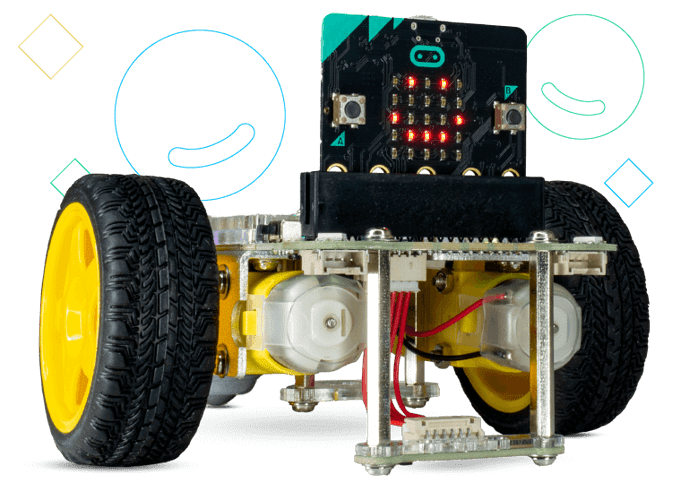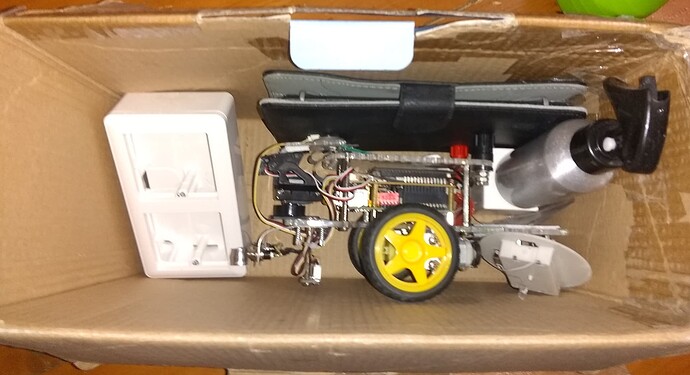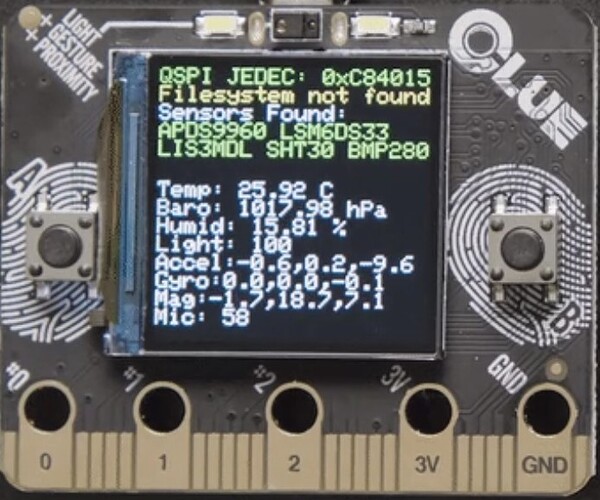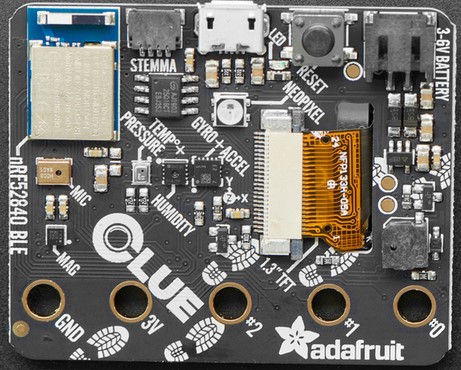Greetings!
For those of you whose life is confined to the GoPiGo-3 robot, allow me to introduce to you his little brother - the GiggleBot!
It’s just as cute as the original GoPiGo-3, (before they changed the distance sensor mount) - or perhaps a bit cuter!
It comes with certain things standard, like the line follower, a bunch of NeoPixels, two servo outputs and a bunch of holes to mount things.
You can plug in a distance sensor - complete with googly eyes! - and it’s useful right out of the box.
Like the base GoPiGo package, the micro:bit is not included, though since it’s not being scalped, (at least not yet), it’s relatively inexpensive with the micro:bit-2 going for about $17 at Adafruit.
Note that there are other micro:bit clones out there - the most notable being the Adafruit “Clue”, (a separate article in itself!).
The micro:bit, and as a consequence the GiggleBot, programs in Microsoft make:code which is another Blockly clone like Bloxter - and there are specific GiggleBot extensions you can download when starting make:code to gain access to the GiggleBot specific features and capabilities.
Can you program it in other languages? I think so, though it has been a while since I’ve played with a micro:bit. The Adafruit Clue does NOT program in make:code yet, (they’re working on it), but it can be programmed in Circuit Python and other programming IDE’s. (I think the Arduino IDE is one of them.)
The notable thing about the GiggleBot is that, though not as complex as the GoPiGo robots, it’s a lot more rugged. It’s encased in thick acrylic, comes pre-assembled, and appears to be rugged enough to give to a bunch of pre-school students - though first and second graders should be a cinch! Aside from the micro:bit sticking up from the chassis, I strongly suspect it could withstand a fall down my basement steps and a hard landing on the concrete floor below - and land on its feet and be ready to tackle the next challenge.
Both the ruggedness and the simple interface suggest that it’s designed for a younger crowd than the GoPiGo - though I suspect that anyone who likes challenges will find it meaty enough. I, for one, am looking forward to trying it with the Clue board, though it will require a bit of research before I can get it working.
Since I had to leave Charlie behind, (he hid in his box when we brought out the suitcases),
. . . I decided to bring a GiggleBot instead to experiment with.
More later!





